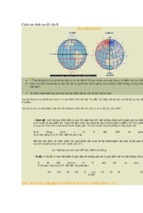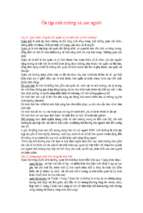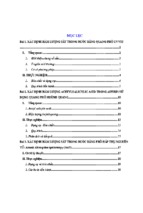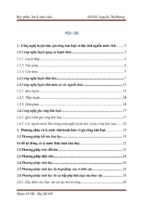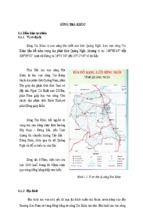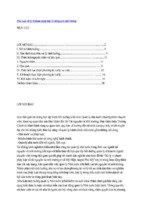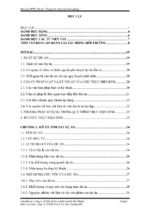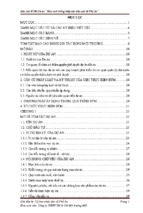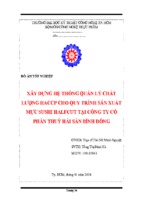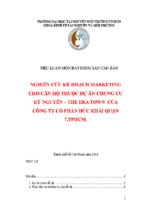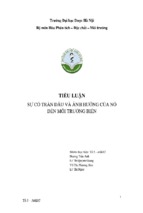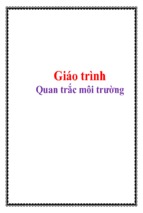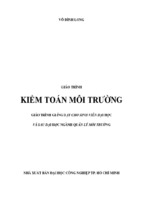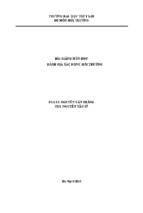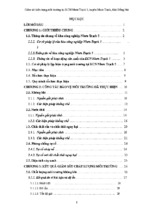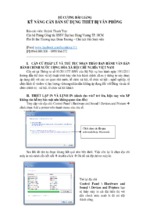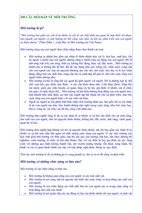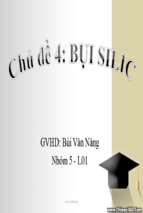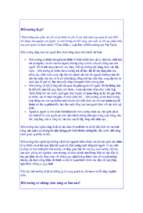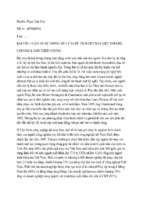L 284/76
EN
Official Journal of the European Union
30.9.2014
COMMISSION IMPLEMENTING DECISION
of 26 September 2014
establishing the best available techniques (BAT) conclusions, under Directive 2010/75/EU of the
European Parliament and of the Council, for the production of pulp, paper and board
(notified under document C(2014) 6750)
(Text with EEA relevance)
(2014/687/EU)
THE EUROPEAN COMMISSION,
Having regard to the Treaty on the Functioning of the European Union,
Having regard to Directive 2010/75/EU of the European Parliament and of the Council of 24 November 2010 on indus
trial emissions (integrated pollution prevention and control) (1), and in particular Article 13(5) thereof,
Whereas:
(1)
Article 13(1) of Directive 2010/75/EU requires the Commission to organise an exchange of information on
industrial emissions between it and Member States, the industries concerned and non-governmental organisations
promoting environmental protection in order to facilitate the drawing up of best available techniques (BAT) refer
ence documents as defined in Article 3(11) of that Directive.
(2)
In accordance with Article 13(2) of Directive 2010/75/EU, the exchange of information is to address the perform
ance of installations and techniques in terms of emissions, expressed as short- and long-term averages, where
appropriate, and the associated reference conditions, consumption and nature of raw materials, water consump
tion, use of energy and generation of waste and the techniques used, associated monitoring, cross-media effects,
economic and technical viability and developments therein and best available techniques and emerging techniques
identified after considering the issues mentioned in points (a) and (b) of Article 13(2) of that Directive.
(3)
‘BAT conclusions’ as defined in Article 3(12) of Directive 2010/75/EU are the key element of BAT reference docu
ments and lay down the conclusions on best available techniques, their description, information to assess their
applicability, the emission levels associated with the best available techniques, associated monitoring, associated
consumption levels and, where appropriate, relevant site remediation measures.
(4)
In accordance with Article 14(3) of Directive 2010/75/EU, BAT conclusions are to be the reference for setting
permit conditions for installations covered by Chapter II of that Directive.
(5)
Article 15(3) of Directive 2010/75/EU requires the competent authority to set emission limit values that ensure
that, under normal operating conditions, emissions do not exceed the emission levels associated with the best
available techniques as laid down in the decisions on BAT conclusions referred to in Article 13(5) of Directive
2010/75/EU.
(6)
Article 15(4) of Directive 2010/75/EU provides for derogations from the requirement laid down in Article 15(3)
only where the costs associated with the achievement of the emission levels associated with the BAT disproportio
nately outweigh the environmental benefits due to the geographical location, the local environmental conditions
or the technical characteristics of the installation concerned.
(7)
Article 16(1) of Directive 2010/75/EU provides that the monitoring requirements in the permit referred to in
point (c) of Article 14(1) of the Directive are to be based on the conclusions on monitoring as described in the
BAT conclusions.
(8)
In accordance with Article 21(3) of Directive 2010/75/EU, within 4 years of publication of decisions on BAT
conclusions, the competent authority is to reconsider and, if necessary, update all the permit conditions and
ensure that the installation complies with those permit conditions.
(1) OJ L 334, 17.12.2010, p. 17.
30.9.2014
EN
Official Journal of the European Union
L 284/77
(9)
Commission Decision of 16 May 2011 (1) establishes a forum, for the exchange of information pursuant to
Article 13 of Directive 2010/75/EU on industrial emissions, which is composed of representatives of Member
States, the industries concerned and non-governmental organisations promoting environmental protection.
(10)
In accordance with Article 13(4) of Directive 2010/75/EU, the Commission obtained the opinion of that forum
on the proposed content of the BAT reference document for the production of pulp, paper and board on
20 September 2013 and made it publicly available (2).
(11)
The measures provided for in this Decision are in accordance with the opinion of the Committee established by
Article 75(1) of Directive 2010/75/EU,
HAS ADOPTED THIS DECISION:
Article 1
The BAT conclusions for the production of pulp, paper and board are set out in the Annex to this Decision.
Article 2
This Decision is addressed to the Member States.
Done at Brussels, 26 September 2014.
For the Commission
Janez POTOČNIK
Member of the Commission
(1) OJ C 146, 17.5.2011, p. 3.
(2) https://circabc.europa.eu/w/browse/6516b21a-7f84-4532-b0e1-52d411bd0309
L 284/78
EN
Official Journal of the European Union
30.9.2014
ANNEX
BAT CONCLUSIONS FOR THE PRODUCTION OF PULP, PAPER AND BOARD
SCOPE ...........................................................................................................................................
79
GENERAL CONSIDERATIONS ............................................................................................................
80
EMISSION LEVELS ASSOCIATED WITH BAT .........................................................................................
80
AVERAGING PERIODS FOR EMISSIONS TO WATER ...............................................................................
80
REFERENCE CONDITIONS FOR EMISSIONS TO AIR ...............................................................................
80
AVERAGING PERIODS FOR EMISSIONS TO AIR ....................................................................................
81
DEFINITIONS ..................................................................................................................................
81
1.1.
General BAT conclusions for the pulp and paper industry ...........................................................
84
1.1.1.
Environmental management system ........................................................................................
84
1.1.2.
Materials management and good housekeeping .........................................................................
85
1.1.3.
Water and waste water management .......................................................................................
86
1.1.4.
Energy consumption and efficiency ........................................................................................
87
1.1.5.
Emissions of odour .............................................................................................................
88
1.1.6.
Monitoring of key process parameters and of emissions to water and air ........................................
89
1.1.7.
Waste management .............................................................................................................
91
1.1.8.
Emissions to water ..............................................................................................................
92
1.1.9.
Emissions of noise ..............................................................................................................
93
1.1.10.
Decommissioning ...............................................................................................................
94
1.2.
BAT conclusions for kraft pulping process ...............................................................................
94
1.2.1.
Waste water and emissions to water ........................................................................................
94
1.2.2.
Emissions to air .................................................................................................................
96
1.2.3.
Waste generation ................................................................................................................ 102
1.2.4.
Energy consumption and efficiency ........................................................................................ 103
1.3.
BAT conclusions for the sulphite pulping process ...................................................................... 104
1.3.1.
Waste water and emissions to water ........................................................................................ 104
1.3.2.
Emissions to air ................................................................................................................. 106
1.3.3.
Energy consumption and efficiency ........................................................................................ 108
1.4.
BAT conclusions for mechanical pulping and chemimechanical pulping .......................................... 109
1.4.1.
Waste water and emissions to water ........................................................................................ 109
1.4.2.
Energy consumption and efficiency ........................................................................................ 110
1.5.
BAT conclusions for processing paper for recycling .................................................................... 111
1.5.1.
Materials management ......................................................................................................... 111
30.9.2014
Official Journal of the European Union
EN
L 284/79
1.5.2.
Waste water and emissions to water ........................................................................................ 112
1.5.3.
Energy consumption and efficiency ........................................................................................ 114
1.6.
BAT conclusions for papermaking and related processes .............................................................. 114
1.6.1.
Waste water and emissions to water ........................................................................................ 114
1.6.2.
Emissions to air ................................................................................................................. 117
1.6.3.
Waste generation ................................................................................................................ 117
1.6.4.
Energy consumption and efficiency ........................................................................................ 117
1.7.
Description of techniques ..................................................................................................... 118
1.7.1.
Description of techniques for the prevention and control of emissions to air ................................... 118
1.7.2.
Description of techniques to reduce fresh water use/waste water flow and the pollution load in waste
water ............................................................................................................................... 121
1.7.3.
Description of techniques for waste generation prevention and waste management ........................... 126
SCOPE
These BAT conclusions concern the activities specified in Sections 6.1.(a) and 6.1.(b) of Annex I to Directive
2010/75/EU, i.e. the integrated and non-integrated production in industrial installations of:
(a) pulp from timber or other fibrous materials;
(b) paper or cardboard with a production capacity exceeding 20 tonnes per day.
In particular, these BAT conclusions cover the following processes and activities:
(i)
chemical pulping:
(a) kraft (sulphate) pulping process
(b) sulphite pulping process
(ii) mechanical and chemimechanical pulping
(iii) processing paper for recycling with and without deinking
(iv) papermaking and related processes
(v) all recovery boilers and lime kilns operated in pulp and paper mills
These BAT conclusions do not address the following activities:
(i)
production of pulp from non-wood fibrous raw material (e.g. yearly plant pulp);
(ii) stationary internal combustion engines;
(iii) combustion plants for steam and power generation other than recovery boilers;
(iv) dryers with internal burners for paper machines and coaters.
Other reference documents which are relevant for the activities covered by these BAT conclusions are the following:
Reference documents
Activity
Industrial Cooling Systems (ICS)
Industrial cooling systems, e.g. cooling towers, plate heat
exchangers
Economics and Cross-Media Effects (ECM)
Economics and cross-media effects of techniques
L 284/80
Official Journal of the European Union
EN
Reference documents
30.9.2014
Activity
Emissions from Storage (EFS)
Emissions from tanks, pipework and stored chemicals
Energy Efficiency (ENE)
General energy efficiency
Large Combustion Plants (LCP)
Generation of steam and electricity in pulp and paper mills
by combustion plants
General Principles of Monitoring (MON)
Emissions monitoring
Waste Incineration (WI)
On-site incineration and co-incineration of waste
Waste Treatments Industries (WT)
Preparation of waste as fuels
GENERAL CONSIDERATIONS
The techniques listed and described in these BAT conclusions are neither prescriptive nor exhaustive. Other techniques
may be used that ensure at least an equivalent level of environmental protection.
Unless otherwise stated, the BAT conclusions are generally applicable.
EMISSION LEVELS ASSOCIATED WITH BAT
Where emission levels associated with the best available techniques (BAT-AELs) are given for the same averaging period
in different units (e.g. as concentration and specific load values (that is per tonne of net production)), those different
ways of expressing BAT-AELs are to be seen as equivalent alternatives.
For integrated and multi-product pulp and paper mills, the BAT-AELs defined for the individual processes (pulping,
papermaking) and/or products need to be combined according to a mixing rule based on their additive shares of
discharge.
AVERAGING PERIODS FOR EMISSIONS TO WATER
Unless stated otherwise, the averaging periods associated with the BAT-AELs for emissions to water are defined as
follows.
Daily average
Average over a sampling period of 24 hours taken as a flow-proportional composite
sample (1) or, provided that sufficient flow stability is demonstrated, from a time-propor
tional sample (1)
Yearly average
Average of all daily averages taken within a year, weighted according to the daily produc
tion, and expressed as mass of emitted substances per unit of mass of products/materials
generated or processed
(1) In special cases, there may be a need to apply a different sampling procedure (e.g. grab sampling)
REFERENCE CONDITIONS FOR EMISSIONS TO AIR
The BAT-AELs for emissions to air refer to standard conditions: dry gas, temperature of 273,15 K, and pressure of
101,3 kPa. Where BAT-AELs are given as concentration values, the reference O2 level ( % by volume) is indicated.
30.9.2014
Official Journal of the European Union
EN
L 284/81
Conversion to reference oxygen concentration
The formula for calculating the emissions concentration at a reference oxygen level is shown below.
ER ¼
21 − OR
� EM
21 − OM
where:
ER (mg/Nm3):
emissions concentration referred to the reference oxygen level OR
OR (vol %):
reference oxygen level
EM (mg/Nm3):
measured emissions concentration referred to the measured oxygen level OM
OM (vol %):
measured oxygen level.
AVERAGING PERIODS FOR EMISSIONS TO AIR
Unless stated otherwise, the averaging periods associated with the BAT-AELs for emissions to air are defined as follows.
Daily average
Average over a period of 24 hours based on valid hourly averages from continuous
measurement
Average over the sampling
period
Average value of three consecutive measurements of at least 30 minutes each
Yearly average
In the case of continuous measurement: average of all valid hourly averages. In the case
of periodic measurements: average of all ‘averages over the sampling period’ obtained
during one year.
DEFINITIONS
For the purpose of these BAT conclusions, the following definitions apply:
Term used
Definition
New plant
A plant first permitted on the site of the installation following the publication of these
BAT conclusions or a complete replacement of a plant on the existing foundations of the
installation following the publication of these BAT conclusions.
Existing plant
A plant which is not a new plant.
Major refurbishment
A major change in design or technology of a plant/abatement system and with major
adjustments or replacements of the process units and associated equipment.
New dust abatement system
A dust abatement system first operated on the site of the installation following the publi
cation of these BAT conclusions.
Existing dust abatement
system
A dust abatement system which is not a new dust abatement system.
Non-condensable odorous
gases (NCG)
Non-condensable odorous gases, referring to malodorous gases of kraft pulping.
Concentrated non-conden
sable odorous gases (CNCG)
Concentrated non-condensable odorous gases (or ‘strong odorous gases’): TRS-containing
gases from cooking, evaporation and from stripping of condensates.
L 284/82
Official Journal of the European Union
EN
Term used
30.9.2014
Definition
Strong odorous gases
Concentrated non-condensable odorous gases (CNCG).
Weak odorous gases
Diluted non-condensable odorous gases: TRS-containing gases which are not strong
odorous gases (e.g. gases coming from tanks, washing filters, chip bins, lime mud filters,
drying machines).
Residual weak gases
Weak gases that are emitted in ways other than through a recovery boiler, a lime kiln or
a TRS-burner.
Continuous measurement
Measurements using an automated measuring system (AMS) permanently installed on
site.
Periodic measurement
Determination of a measurand (particular quantity subject to measurement) at specified
time intervals using manual or automated methods.
Diffuse emissions
Emissions arising from a direct (non-channelled) contact of volatile substances or dust
with the environment under normal operating conditions.
Integrated production
Both pulp and paper/board are produced at the same site. The pulp is normally not dried
before paper/board manufacture.
Non-integrated production
Either (a) production of market pulp (for sale) in mills that do not operate paper
machines, or (b) production of paper/board using only pulp produced in other plants
(market pulp).
(i)
(ii)
(iii)
Net production
(iv)
(v)
For paper mills: the unpacked, saleable production after the last slitter winder, i.e.
before converting.
For off-line coaters: production after coating.
For tissue mills: saleable production after the tissue machine before any rewinding
processes and excluding any core.
For market pulp mills: production after packing (ADt).
For integrated mills: Net pulp, production refers to the production after packing
(ADt) plus the pulp transferred to the paper mill (pulp calculated at 90 % dryness,
i.e. air dry). Net paper production: same as (i)
Speciality paper mill
A mill producing numerous paper and board grades for special purposes (industrial
and/or non-industrial) that are characterised by particular properties, relatively small end
use market or niche applications that are often especially designed for a particular
customer or end-user group. Examples of speciality papers include cigarette papers, filter
papers, metallised paper, thermal paper, self-copy paper, sticking labels, cast coated paper,
as well as gypsum liners and special papers for waxing, insulating, roofing, asphalting,
and other specific applications or treatments. All of these grades fall outside of the stand
ard paper categories.
Hardwood
Group of wood species including e.g. aspen, beech, birch and eucalyptus. The term hard
wood is used as opposite to softwood.
Softwood
Wood from conifers including e.g. pine and spruce. The term softwood is used as oppo
site to hardwood.
Causticising
Process in the lime cycle in which hydroxide (white liquor) is regenerated by the reaction
Ca(OH)2 + CO32– → CaCO3 (s) + 2 OH–
30.9.2014
EN
Official Journal of the European Union
L 284/83
ACRONYMS
Term used
Definition
ADt
Air Dry tonnes (of pulp) expressed as 90 % dryness.
AOX
Adsorbable organic halides measured according to the EN ISO: 9562 standard method
for waste waters.
BOD
Biochemical oxygen demand. The quantity of dissolved oxygen required by microorgan
isms to decompose organic matter in waste water.
CMP
Chemimechanical pulp.
CTMP
Chemithermomechanical pulp.
COD
Chemical oxygen demand; the amount of chemically oxidisable organic matter in waste
water (normally referring to analysis with dichromate oxidation).
DS
Dry solids, expressed as weight %.
DTPA
Diethlyene triamine pentaacetic acid (complexing/chelating agent used in peroxide
bleaching).
ECF
Elemental Chlorine Free.
EDTA
Ethylene diamine tetraacetic acid (complexing/chelating agent).
H2S
Hydrogen sulphide.
LWC
Light weight coated paper.
NOX
The sum of nitrogen oxide (NO) and nitrogen dioxide (NO2), expressed as NO2.
NSSC
Neutral sulphite semi chemical.
RCF
Recycled fibres.
SO2
Sulphur dioxide.
TCF
Totally Chlorine Free.
Total nitrogen (Tot-N)
Total nitrogen (Tot-N) given as N, includes organic nitrogen, free ammonia and ammo
nium (NH4+-N), nitrites (NO2--N) and nitrates (NO3--N).
Total phosphorus (Tot-P)
Total phosphorus (Tot-P) given as P, includes dissolved phosphorus plus any insoluble
phosphorus carried over into the effluent in the form of precipitates or within microbes.
TMP
Thermomechanical pulp.
TOC
Total organic carbon.
L 284/84
Official Journal of the European Union
EN
Term used
30.9.2014
Definition
TRS
Total reduced sulphur. The sum of the following reduced malodorous sulphur
compounds generated in the pulping process: hydrogen sulphide, methyl mercaptan,
dimethylsulphide and dimethyldisulphide, expressed as sulphur.
TSS
Total suspended solids (in waste water). Suspended solids consist of small fibre fragments,
fillers, fines, non-settled biomass (agglomeration of microorganisms) and other small
particles.
VOC
Volatile organic compounds as defined in Article 3(45) of Directive 2010/75/EU.
1.1.
GENERAL BAT CONCLUSIONS FOR THE PULP AND PAPER INDUSTRY
The process specific BAT conclusions included in Sections 1.2 to 1.6 apply, in addition to the general BAT
conclusions mentioned in this section.
1.1.1.
Environmental management system
BAT 1. In order to improve the overall environmental performance of plants for the production of pulp,
paper and board, BAT is to implement and adhere to an environmental management system (EMS) that incor
porates all of the following features:
(a) commitment of the management, including senior management;
(b) definition of an environmental policy that includes the continuous improvement of the installation by the
management;
(c) planning and establishing the necessary procedures, objectives and targets, in conjunction with financial
planning and investment;
(d) implementation of procedures paying particular attention to:
(i)
structure and responsibility
(ii)
training, awareness and competence
(iii) communication
(iv)
employee involvement
(v)
documentation
(vi)
efficient process control
(vii) maintenance programmes
(viii) emergency preparedness and response
(ix) safeguarding compliance with environmental legislation;
(e) checking performance and taking corrective action, paying particular attention to:
(i)
monitoring and measurement (see also the Reference Document on the General Principles of Moni
toring)
(ii) corrective and preventive action
(iii) maintenance of records
(iv) independent (where practicable) internal and external auditing in order to determine whether or not
the EMS conforms to planned arrangements and has been properly implemented and maintained;
30.9.2014
Official Journal of the European Union
EN
L 284/85
(f) review of the EMS and its continuing suitability, adequacy and effectiveness by senior management;
(g) following the development of cleaner technologies;
(h) consideration for the environmental impacts from the eventual decommissioning of the installation at the
stage of designing a new plant, and throughout its operating life;
(i) application of sectoral benchmarking on a regular basis.
Applicability
The scope (e.g. level of details) and nature of the EMS (e.g. standardised or non-standardised) will generally be
related to the nature, scale and complexity of the installation, and the range of environmental impacts it may
have.
1.1.2.
Materials management and good housekeeping
BAT 2. BAT is to apply the principles of good housekeeping for minimising the environmental impact of the
production process by using a combination of the techniques given below.
Technique
a
Careful selection and control of chemicals and additives
b
Input-output analysis with a chemical inventory, including quantities and toxicological properties
c
Minimise the use of chemicals to the minimum level required by the quality specifications of the final
product
d
Avoid the use of harmful substances (e.g. nonylphenol ethoxylate-containing dispersion or cleaning
agents or surfactants) and substitution by less harmful alternatives
e
Minimise the input of substances into the soil by leakage, aerial deposition and the inappropriate
storage of raw materials, products or residues
f
Establish a spill management programme and extend the containment of relevant sources, thus
preventing the contamination of soil and groundwater
g
Proper design of the piping and storage systems to keep the surfaces clean and to reduce the need for
washing and cleaning
BAT 3. In order to reduce the release of not readily biodegradable organic chelating agents such as EDTA or
DTPA from peroxide bleaching, BAT is to use a combination of the techniques given below.
Technique
Applicability
a
Determination of quantity of chelating agents
Not applicable for mills that do not use chelating
released to the environment through periodic
agents
measurements
b
Process optimisation to reduce consumption and Not applicable for plants that eliminate 70 % or
emission of not readily biodegradable chelating more of EDTA/DTPA in their waste water treat
agents
ment plant or process
c
Preferential use of biodegradable or eliminable Applicability depends on the availability of appro
chelating agents, gradually phasing out non- priate substitutes (biodegradable agents meeting
degradable products
e.g. brightness requirements of pulp)
L 284/86
1.1.3.
EN
Official Journal of the European Union
30.9.2014
Water and waste water management
BAT 4. In order to reduce the generation and the pollution load of waste water from wood storage and
preparation, BAT is to use a combination of the techniques given below.
Technique
Applicability
Restricted applicability when high purity and
brightness is required with TCF bleaching
a
Dry debarking (description see Section 1.7.2.1)
b
Handling of wood logs in such a way as to avoid
the contamination of bark and wood with sand Generally applicable
and stones
c
Paving of the wood yard area and particularly the Applicability may be restricted due to the size of
surfaces used for the storage of chips
the wood yard and storage area
d
Controlling the flow of sprinkling water and
minimising surface run-off water from the wood Generally applicable
yard
e
Applicability may be restricted by the degree of
Collecting of contaminated run-off water from
contamination of run-off water (low concentra
the wood yard and separating out suspended
tion) and/or the size of the waste water treatment
solids effluent before biological treatment
plant (large volumes)
The BAT-associated effluent flow from dry debarking is 0,5 – 2,5 m3/ADt.
BAT 5. In order to reduce fresh water use and generation of waste water, BAT is to close the water system to
the degree technically feasible in line with the pulp and paper grade manufactured by using a combination of
the techniques given below.
Technique
Applicability
a
Monitoring and optimising water usage
b
Evaluation of water recirculation options
c
Balancing the degree of closure of water circuits
and potential drawbacks; adding additional equip
ment if necessary
Generally applicable
d
Separation of less contaminated sealing water
from pumps for vacuum generation and reuse
e
Separation of clean cooling water from contami
nated process water and reuse
f
Applicable to new plants and major refurbish
ments.
Reusing process water to substitute for fresh
Applicability may be limited due to water quality
water (water recirculation and closing of water
and/or product quality requirements or due to
loops)
technical constraints (such as precipitation/incrus
tation in water system) or increase odour nuisance
g
In-line treatment of (parts of) process water to
improve water quality to allow for recirculation Generally applicable
or reuse
30.9.2014
Official Journal of the European Union
EN
L 284/87
The BAT-associated waste water flow at the point of discharge after waste water treatment as yearly
averages are:
Sector
BAT-associated waste water flow
Bleached kraft
25 – 50 m3/ADt
Unbleached kraft
15 – 40 m3/ADt
Bleached sulphite paper grade pulp
25 – 50 m3/ADt
Magnefite pulp
45 – 70 m3/ADt
Dissolving pulp
40 – 60 m3/ADt
NSSC pulp
11 – 20 m3/ADt
Mechanical pulp
9 – 16 m3/t
CTMP and CMP
9 – 16 m3/ADt
RCF paper mills without deinking
1,5 – 10 m3/t (the higher end of the range is mainly
associated with folding boxboard production)
RCF paper mills with deinking
RCF-based tissue paper mills with deinking
10 – 25 m3/t
Non-integrated paper mills
1.1.4.
8 – 15 m3/t
3,5 – 20 m3/t
Energy consumption and efficiency
BAT 6. In order to reduce fuel and energy consumption in pulp and paper mills, BAT is to use technique (a)
and a combination of the other techniques given below.
Technique
Applicability
a
Use an energy management system that includes
all of the following features:
(i) Assessment of the mill's overall energy
consumption and production
Generally applicable
(ii) Locating, quantifying and optimising the
potentials for energy recovery
(iii) Monitoring and safeguarding the optimised
situation for energy consumption
b
Recover energy by incinerating those wastes and
residues from the production of pulp and paper
that have high organic content and calorific
value, taking into account BAT 12
Only applicable if the recycling or reuse of wastes
and residues from the production of pulp and
paper with a high organic content and high
calorific value is not possible
L 284/88
Official Journal of the European Union
EN
Technique
30.9.2014
Applicability
c
Applicable for all new plants and for major refurb
Cover the steam and power demand of the
ishments of the energy plant. Applicability in
production processes as far as possible by the
existing plants may be limited due to the mill
cogeneration of heat and power (CHP)
layout and available space
d
Use excess heat for the drying of biomass and Applicability of this technique may be limited in
sludge, to heat boiler feedwater and process cases where the heat sources and locations are far
apart
water, to heat buildings, etc.
e
Use thermo compressors
f
Insulate steam and condensate pipe fittings
g
Use energy efficient vacuum systems for dewa
tering
h
Use high efficiency electrical motors, pumps and
Generally applicable
agitators
i
Use frequency inverters for fans, compressors
and pumps
j
Match steam pressure levels with actual pressure
needs
Applicable to both new and existing plants for all
grades of paper and for coating machines, as long
as medium pressure steam is available
Description
Technique (c): Simultaneous generation of heat and electrical and/or mechanical energy in a single process,
referred to as a combined heat and power plant (CHP). CHP plants in the pulp and paper industry normally
apply steam turbines and/or gas turbines. The economic viability (achievable savings and payback time) will
depend mainly on the cost of electricity and fuels.
1.1.5.
Emissions of odour
With regard to the emissions of malodorous sulphur-containing gases from kraft and sulphite pulp mills, see
the process-specific BAT given in Sections 1.2.2 and 1.3.2.
BAT 7. In order to prevent and reduce the emission of odorous compounds originating from the waste water
system, BAT is to use a combination of the techniques given below.
Technique
I. Applicable for odours related to water systems closure
a
Design paper mill processes, stock and water storage tanks, pipes and chests in such a way as to avoid
prolonged retention times, dead zones or areas with poor mixing in water circuits and related units, in
order to avoid uncontrolled deposits and the decay and decomposition of organic and biological
matter.
b
Use biocides, dispersants or of oxidising agents (e.g. catalytic disinfection with hydrogen peroxide) to
control odour and decaying bacteria growth.
30.9.2014
EN
Official Journal of the European Union
L 284/89
Technique
c
Install internal treatment processes (‘kidneys’) to reduce the concentrations of organic matter and
consequently possible odour problems in the white water system.
II. Applicable for odours related to waste water treatment and sludge handling, in order to avoid
conditions where waste water or sludge becomes anaerobic
a
b
Avoid over-aeration in equalisation basins but maintain sufficient mixing.
c
Ensure sufficient aeration capacity and mixing properties in aeration tanks; revise the aeration system
regularly.
d
Guarantee proper operation of secondary clarifier sludge collection and return sludge pumping
e
Limit the retention time of sludge in sludge storages by sending the sludge continuously to the dewa
tering units.
f
Avoid the storage of waste water in the spill basin longer than is necessary; keep the spill basin empty.
g
If sludge dryers are used, treatment of thermal sludge dryer vent gases by scrubbing and/or bio filtra
tion (such as compost filters).
h
1.1.6.
Implement closed sewer systems with controlled vents, using chemicals in some cases to reduce the
formation of and to oxidise hydrogen sulphide in sewer systems.
Avoid air cooling towers for untreated water effluent by applying plate heat exchangers.
Monitoring of key process parameters and of emissions to water and air
BAT 8. BAT is to monitor the key process parameters according to the table given below.
I. Monitoring key process parameters relevant for emissions to air
Parameter
Monitoring frequency
Pressure, temperature, oxygen, CO and water vapour content in flue-gas
for combustion processes
Continuous
II. Monitoring key process parameters relevant for emissions to water
Parameter
Water flow, temperature and pH
Monitoring frequency
Continuous
P and N content in biomass, sludge volume index, excess ammonia and
ortho-phosphate in the effluent, and microscopy checks of the biomass
Periodic
Volume flow and CH4 content of biogas produced in anaerobic waste
water treatment
Continuous
H2S and CO2 contents of biogas produced in anaerobic waste water
treatment
Periodic
L 284/90
Official Journal of the European Union
EN
30.9.2014
BAT 9. BAT is to carry out the monitoring and measurement of emissions to air, as indicated below, on a
regular basis with the frequency indicated and according to EN standards. If EN standards are not available,
BAT is to use ISO, national or other international standards which ensure the provision of data of an equiva
lent scientific quality.
Parameter
Monitoring frequency
Emission source
Monitoring associated
with
Continuous
BAT 28
BAT 29
Recovery boiler (kraft) and
lime kiln
BAT 23
BAT 27
Recovery boiler (sulphite)
BAT 37
Recovery boiler
BAT 21
Periodic or continuous
Lime kiln and dedicated TRS
burner
BAT 24
BAT 25
BAT 28
Periodic
d
Dedicated TRS burner
Continuous
c
BAT 24
BAT 26
Periodic
Diffuse emissions from
different sources (e.g. the fibre
line, tanks, chip bins, etc.) and
residual weak gases
BAT 11
BAT 20
Periodic
NOx and SO2
Lime kiln
Periodic or continuous
b
Periodic or continuous
Periodic or continuous
a
Recovery boiler
BAT 21
BAT 22
BAT 36
BAT 37
Recovery boiler equipped with
SNCR
BAT 36
Dust
TRS (including
H2S)
NH3
BAT 10. BAT is to carry out the monitoring of emissions to water, as indicated below, with the indicated
frequency and according to EN standards. If EN standards are not available, BAT is to use ISO, national or
other international standards that ensure the provision of data of an equivalent scientific quality.
Parameter
Monitoring frequency
a
Chemical oxygen demand (COD) or
Total organic carbon (TOC) (1)
Daily (2) (3)
b
BOD5 or BOD7
Weekly (once a week)
c
Total suspended solids (TSS)
Daily (2) (3)
d
Total nitrogen
Weekly (once a week) (2)
e
Total phosphorus
Weekly (once a week) (2)
f
EDTA, DTPA (4)
Monthly (once a month)
Monitoring associated with
BAT 19
BAT 33
BAT 40
BAT 45
BAT 50
30.9.2014
Official Journal of the European Union
EN
Parameter
L 284/91
Monitoring frequency
Monitoring associated with
Monthly (once a month)
g
h
Once every two months
AOX (according to EN ISO
9562:2004) (5)
BAT 19: bleached kraft
BAT 33: except TCF and
NSSC mills
BAT 40: except CTMP
and CMP mills
BAT 45
BAT 50
Relevant metals (e.g. Zn, Cu, Cd, Pb,
Once a year
Ni)
(1) There is a trend to replace COD by TOC for economic and environmental reasons. If TOC is already measured as a key
process parameter, there is no need to measure COD; however, a correlation between the two parameters should be
established for the specific emission source and waste water treatment step.
(2) Rapid test methods can also be used. The results of rapid tests should be checked regularly (e.g. monthly) against EN
standards or, if EN standards are not available, against ISO, national or other international standards which ensure the
provision of data of an equivalent scientific quality.
(3) For mills operating less than seven days a week, the monitoring frequency for COD and TSS may be reduced to cover
the days the mill is in operation or to extend the sampling period to 48 or 72 hours.
(4) Applicable where EDTA or DTPA (chelating agents) are used in the process.
(5) Not applicable to plants that provide evidence that no AOX is generated or added via chemical additives and raw
materials.
BAT 11. BAT is to regularly monitor and assess diffuse total reduced sulphur emissions from relevant sources.
Description
The assessment of diffuse total reduced sulphur emissions can be done by periodic measurement and assess
ment of diffuse emissions that are emitted from different sources (e.g. the fibre line, tanks, chip bins etc.) by
direct measurements.
1.1.7.
Waste management
BAT 12. In order to reduce the quantities of wastes sent for disposal, BAT is to implement a waste assessment
(including waste inventories) and management system, so as to facilitate waste reuse, or failing that, waste recy
cling, or failing that, ‘other recovery’, including a combination of the techniques given below.
Technique
Description
Applicability
a
Separate collection of different waste
fractions (including separation and
classification of hazardous waste)
Generally applicable
b
Merging of suitable fractions of resi
dues to obtain mixtures that can be
better utilised
Generally applicable
c
Pretreatment of process
before reuse or recycling
d
Material recovery and recycling of
process residues on site
Generally applicable
e
Energy recovery on- or off-site from
wastes with high organic content
For off-site utilisation, the applicability
depends on the availability of a third
party
residues
See Section 1.7.3
Generally applicable
L 284/92
Official Journal of the European Union
EN
Technique
Description
30.9.2014
Applicability
f
Depending on the availability of a
third party
g
1.1.8.
External material utilisation
Pretreatment of waste before disposal
Generally applicable
Emissions to water
Further information on waste water treatment in pulp and paper mills and process-specific BAT-AELs are
given in Sections 1.2 to 1.6.
BAT 13. In order to reduce nutrient (nitrogen and phosphorus) emissions into receiving waters, BAT is to
substitute chemical additives with high nitrogen and phosphorus contents by additives containing low nitrogen
and phosphorus contents.
Applicability
Applicable if the nitrogen in the chemical additives is not bioavailable (i.e. it cannot serve as nutrient in biolo
gical treatment) or if the nutrient balance is in surplus.
BAT 14. In order to reduce emissions of pollutants into receiving waters, BAT is to use all of the techniques
given below.
Technique
Description
a
Primary (physico-chemical) treatment
b
Secondary (biological) treatment ( )
See Section 1.7.2.2
1
(1) Not applicable to plants where the biological load of waste water after the primary treatment is very low, e.g. some
paper mills producing speciality paper.
BAT 15. When further removal of organic substances, nitrogen or phosphorus is needed, BAT is to use
tertiary treatment as described in Section 1.7.2.2.
BAT 16. In order to reduce emissions of pollutants into receiving waters from biological waste water treat
ment plants, BAT is to use all of the techniques given below.
Technique
a
Proper design and operation of the biological treatment plant
b
Regularly controlling the active biomass
c
Adjustment of nutrition supply (nitrogen and phosphorus) to the actual need of the active biomass
30.9.2014
1.1.9.
Official Journal of the European Union
EN
L 284/93
Emissions of noise
BAT 17. In order to reduce the emissions of noise from pulp and paper manufacturing, BAT is to use a
combination of the techniques given below.
Technique
Description
Applicability
Noise-reduction
programme
A noise-reduction programme includes
identification of sources and affected
areas, calculations and measurements of
noise levels in order to rank sources
Generally applicable.
according to noise levels, and identifica
tion of the most cost effective combina
tion of techniques, their implementation
and monitoring.
Strategic planning of the
location of equipment,
units and buildings
Noise levels can be reduced by increasing
the distance between the emitter and the
receiver and by using buildings as noise
screens.
Operational and manage
ment techniques in build
ings containing noisy
equipment
This includes:
— improved inspection and mainten
ance of equipment to prevent failures
— closing of doors and windows of
covered areas
— equipment operation by experienced
staff
— avoidance of noisy activities during
night-time
— provisions for noise control during
maintenance activities
d
Enclosing noisy equip
ment and units
Enclosure of noisy equipment, such as
wood handling, hydraulic units, and
compressors in separate structures, such
as buildings or soundproofed cabinets,
where internal-external lining is made of Generally applicable.
impact-absorbent material.
e
Use of low-noise equipment and noise-reducers on equipment and
ducts.
f
Vibration insulation
Vibration insulation of machinery and
decoupled arrangement of noise sources
and potentially resonant components.
Soundproofing of build
ings
This potentially includes use of:
— sound-absorbing materials in walls
and ceilings
— sound-isolating doors
— double-glazed windows
a
b
c
g
Generally applicable to new
plants. In the case of existing
plants, the relocation of equip
ment and production units
may be restricted by the lack
of space or by excessive costs.
L 284/94
Official Journal of the European Union
EN
Technique
Description
Applicability
Noise propagation can be reduced by
inserting barriers between emitters and
receivers. Appropriate barriers include
protection walls, embankments and
buildings. Suitable noise abatement tech
niques include fitting silencers and
attenuators to noisy equipment such as
steam releases and dryer vents.
Generally applicable to new
plants. In the case of existing
plants, the insertion of obsta
cles may be restricted by the
lack of space.
h
Noise abatement
i
Use of larger wood-handling machines to reduce lifting and transport
times and noise from logs falling onto log piles or the feed table.
j
1.1.10.
30.9.2014
Improved ways of working, e.g. releasing logs from a lower height
onto the log piles or the feed table; immediate feedback of the level
of noise for the workers.
Generally applicable.
Decommissioning
BAT 18. In order to prevent pollution risks when decommissioning a plant, BAT is to use the general techni
ques given below.
Technique
a
b
Establish instructions for emptying process equipment, vessels and piping.
c
Ensure a clean closure when the facility is shut down, e.g. to clean up and rehabilitate the site. Natural
soil functions should be safeguarded, if feasible.
d
Use a monitoring programme, especially relative to groundwater, in order to detect possible future
impacts on site or in neighbouring areas.
e
1.2.
Ensure that underground tanks and piping are either avoided in the design phase or that their location
is well known and documented.
Develop and maintain a site closure or cessation scheme, based on risk analysis, that includes a trans
parent organisation of the shutdown work, taking into account relevant local specific conditions.
BAT CONCLUSIONS FOR KRAFT PULPING PROCESS
For integrated kraft pulp and paper mills, the process-specific BAT conclusions for papermaking given in
Section 1.6 apply, in addition to the BAT conclusions in this section.
1.2.1.
Waste water and emissions to water
BAT 19. In order to reduce emissions of pollutants into receiving waters from the whole mill, BAT is to use
TCF or modern ECF bleaching (see description in Section 1.7.2.1), and a suitable combination of the techni
ques specified in BAT 13, BAT 14, BAT 15 and BAT 16 and of the techniques given below.
30.9.2014
Official Journal of the European Union
EN
Technique
Description
a
Oxygen
bleaching
c
Closed brown stock screening and
efficient brown stock washing
d
Partial process water recycling in the
bleach plant
e
Effective spill monitoring and
containment with a suitable recovery
system
f
Maintaining sufficient black liquor
evaporation and recovery boiler capa
city to cope with peak loads
g
Applicability
Modified cooking before bleaching
b
L 284/95
Stripping the contaminated (foul)
condensates and reusing the conden
sates in the process
delignification
before
Generally applicable
Water recycling may be limited due to
incrustation in bleaching
See Section 1.7.2.1
Generally applicable
Generally applicable
BAT-associated emission levels
See Table 1 and Table 2. These BAT-associated emission levels are not applicable to dissolving kraft pulp mills.
The reference waste water flow for kraft mills is set out in BAT 5.
Table 1
BAT-associated emission levels for the direct waste water discharge to receiving waters from a
bleached kraft pulp mill
Parameter
Chemical oxygen demand (COD)
Total suspended solids (TSS)
Total nitrogen
Total phosphorus
Adsorbable organically bound halogens (AOX) (4) (5)
Yearly average
kg/ADt (1)
7 – 20
0,3 – 1,5
0,05 – 0,25 (2)
0,01 – 0,03 (2)
Eucalyptus: 0,02 – 0,11 kg/ADt (3)
0 – 0,2
(1) The BAT-AEL ranges refer to market pulp production and the pulp production part of integrated mills (emissions from
papermaking are not included).
(2) A compact biological waste water treatment plant can result in slightly higher emission levels.
(3) The upper end of the range refers to mills using eucalyptus from regions with higher levels of phosphorus (e.g. Iberian
eucalyptus).
(4) Applicable for mills using chlorine containing bleaching chemicals.
(5) For mills producing pulp with high strength, stiffness and high purity properties (e.g. for liquid packaging board and
LWC), emissions level of AOX up to 0,25 kg/ADt may occur.
- Xem thêm -

